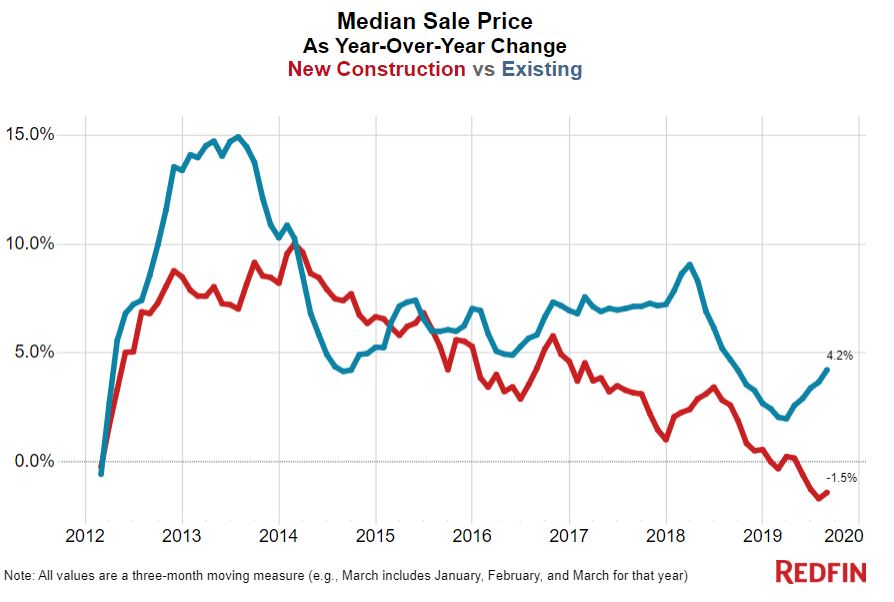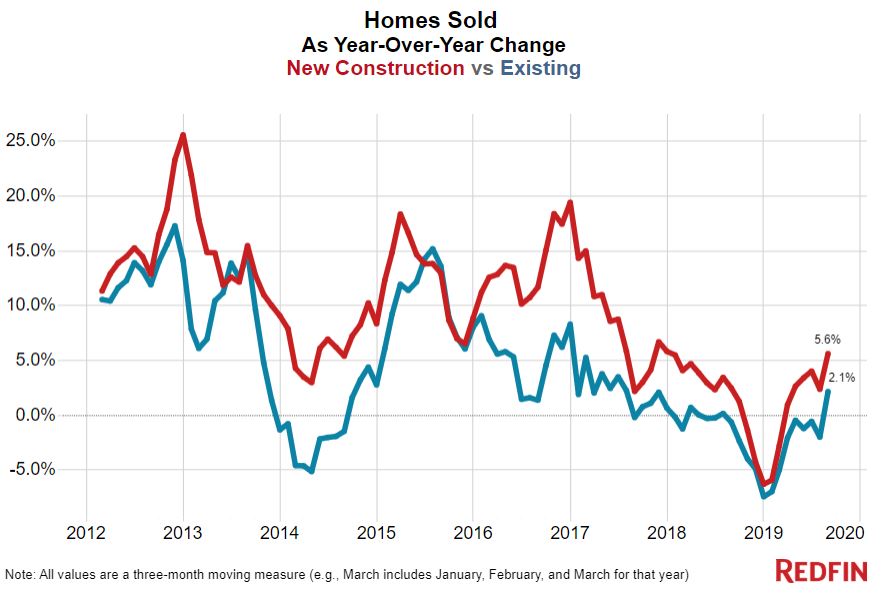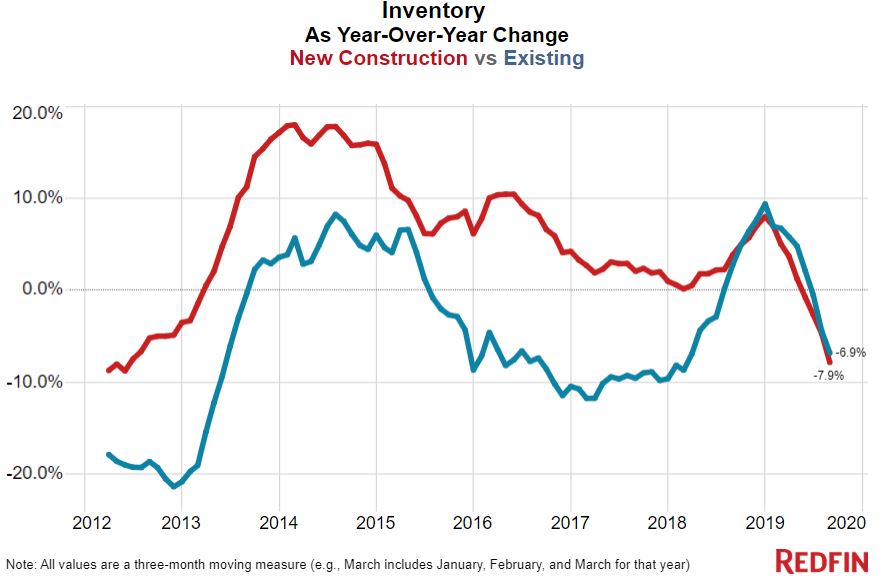Surges in both sales and building permits signal the beginning of a moderate recovery for the new-home market.
New-home sale prices dropped 1.5 percent year over year to a median of $370,300 in the third quarter. That marks the biggest decline since at least 2012 and the third consecutive quarter of declines.

Meanwhile, new-home sales rose 5.6 percent, marking the second consecutive quarter of increases.

New-home supply decreased 7.9 percent year over year, the biggest inventory drop since at least 2012 and the second straight quarter of declines.
Meanwhile, existing-home prices rose 4.2 percent, sales increased 2.1 percent and inventory fell 6.9 percent year over year.

The price decline for new homes is partly a reflection of builders responding to buyer demand for affordability, which strengthened sales, as we predicted it would.
The increase in sales also likely led to the drop in new-home inventory: Days on market were flat from the year before and there was just a small increase in new listings.
The surge in sales, along with a nearly 10 percent year-over-year increase in residential building permits—the biggest in two-and-a-half years—signals the beginning of a moderate recovery for the new-home market.
“Buyers are returning to the new-home market thanks to low mortgage rates and relatively low prices,” said Redfin chief economist Daryl Fairweather. “And builders, also taking advantage of low interest rates to fund projects, are paying attention to preferences for affordability, which has led to more sales. Residential construction was a bright spot in the economy in the third quarter, a sign that builders are working to fill an inventory gap. As we head into the new year, I expect more new-home listings to hit the market, which should help sustain the relatively high level of sales.”
Raleigh Redfin agent Allen Wyde said he’s seeing a resurgence in the new-home market in his area, partly because builders have begun addressing buyer demand after several years of shortages. Twenty-seven percent of homes sold in Raleigh in the third quarter were new, the highest of the metros tracked by Redfin.
“While buyers in Raleigh have always been interested in new homes, construction nearly ground to a halt after the Great Recession as builders were scared of being left with newly built homes they wouldn’t be able to sell,” Wyde said. “In the last two years, builders have loosened the reins and started constructing homes without a buyer in mind. And they’re selling.”
National new construction trends in the third quarter:
Metro-level highlights for new construction in the third quarter:
See below for a downloadable set of monthly data on new construction prices, sales, inventory and other new residential market statistics. The dataset goes back to 2012.


